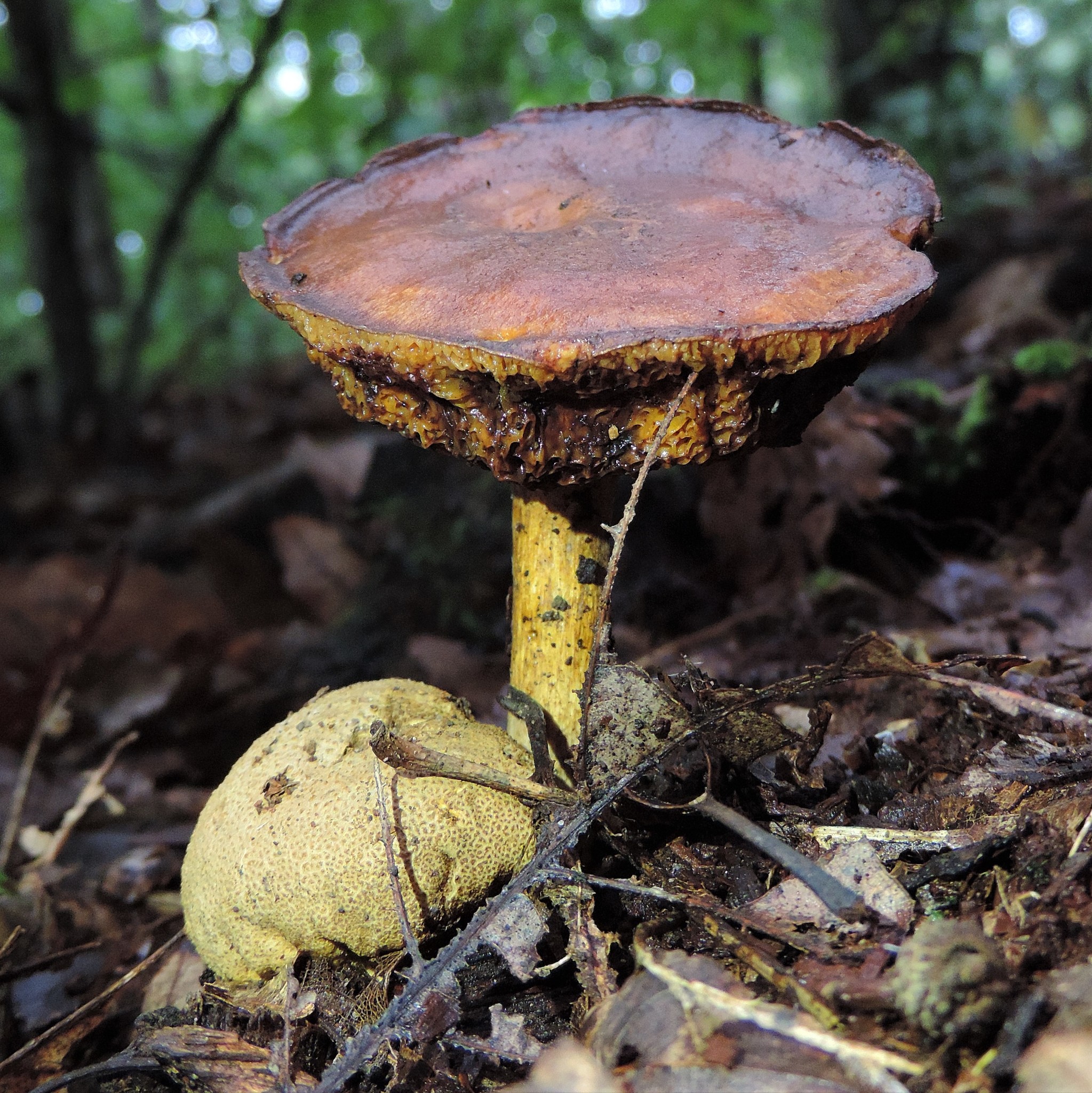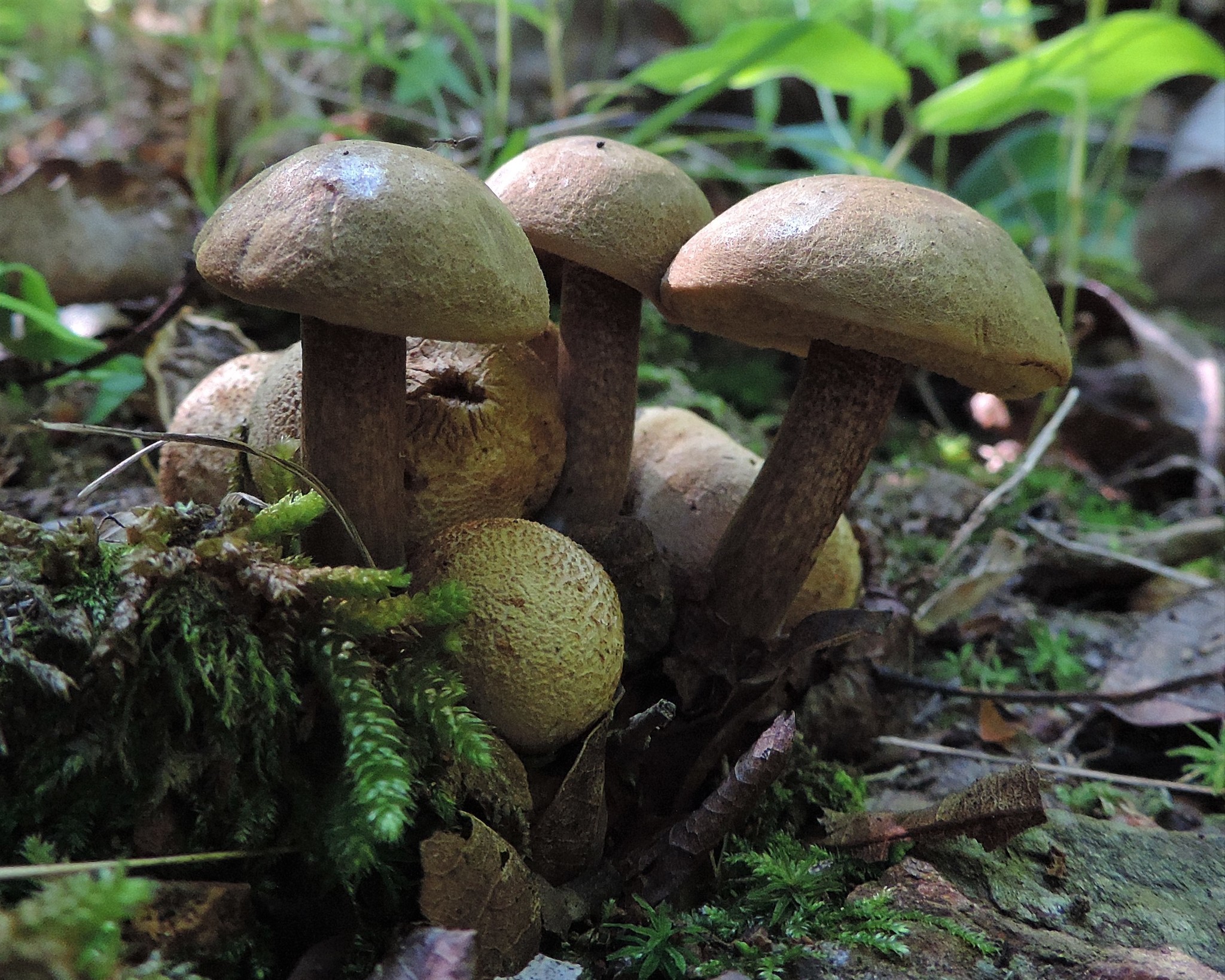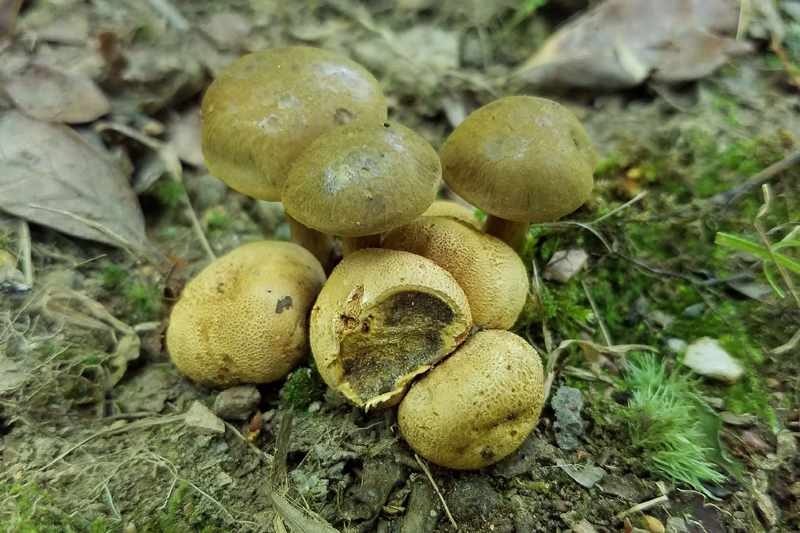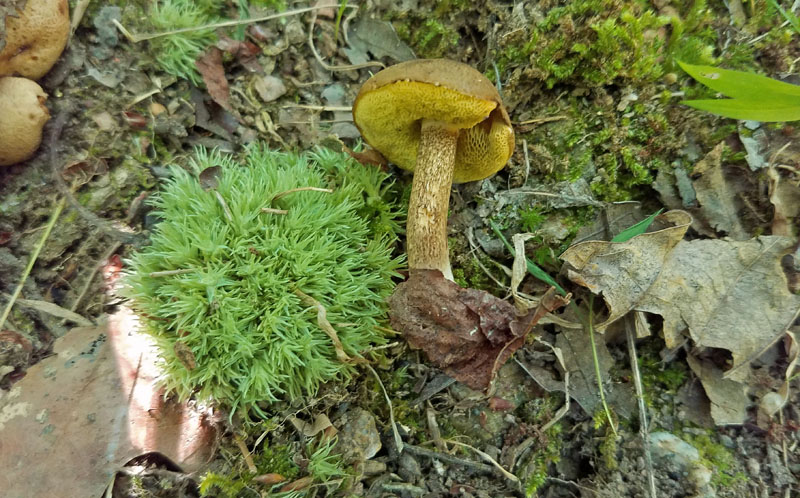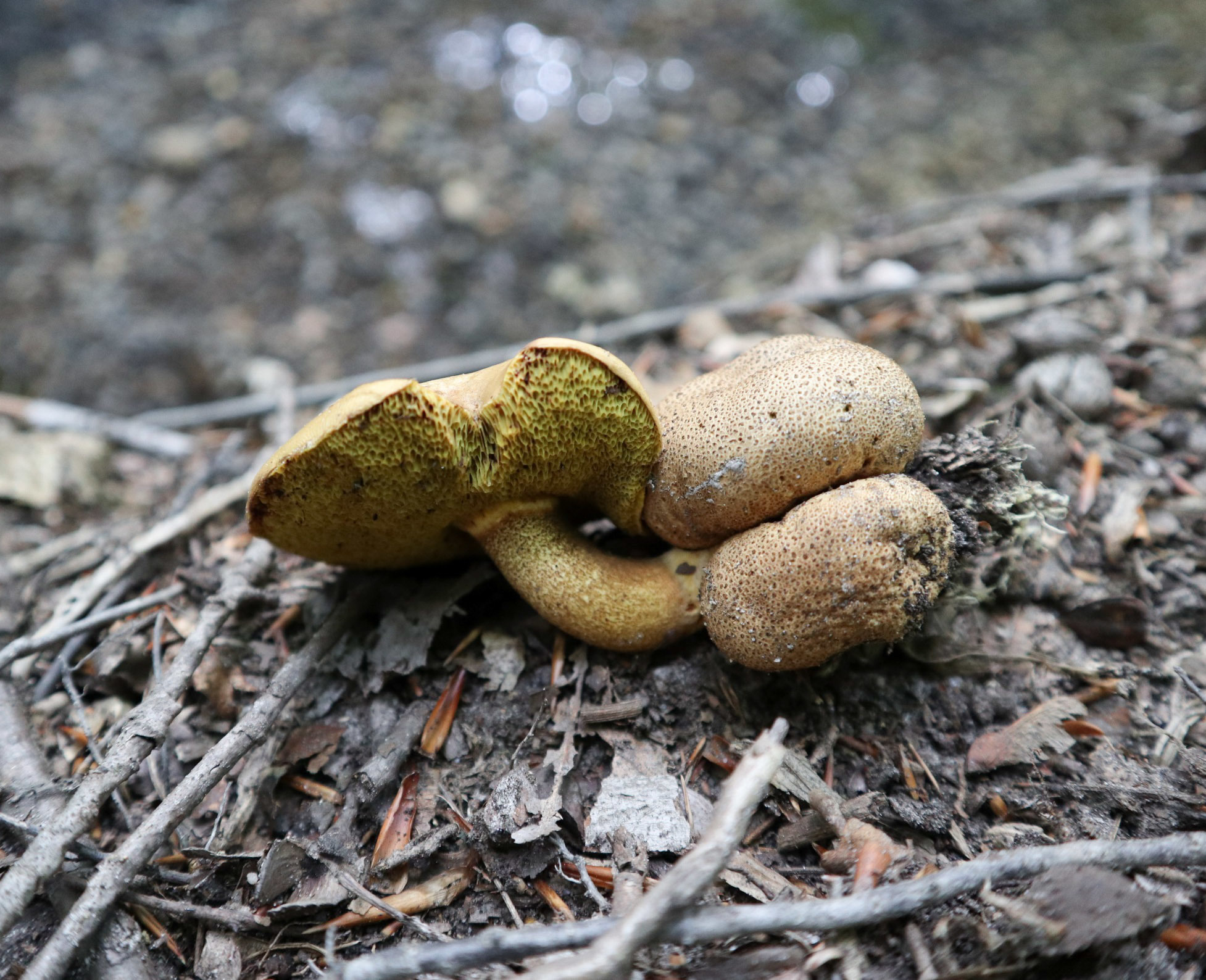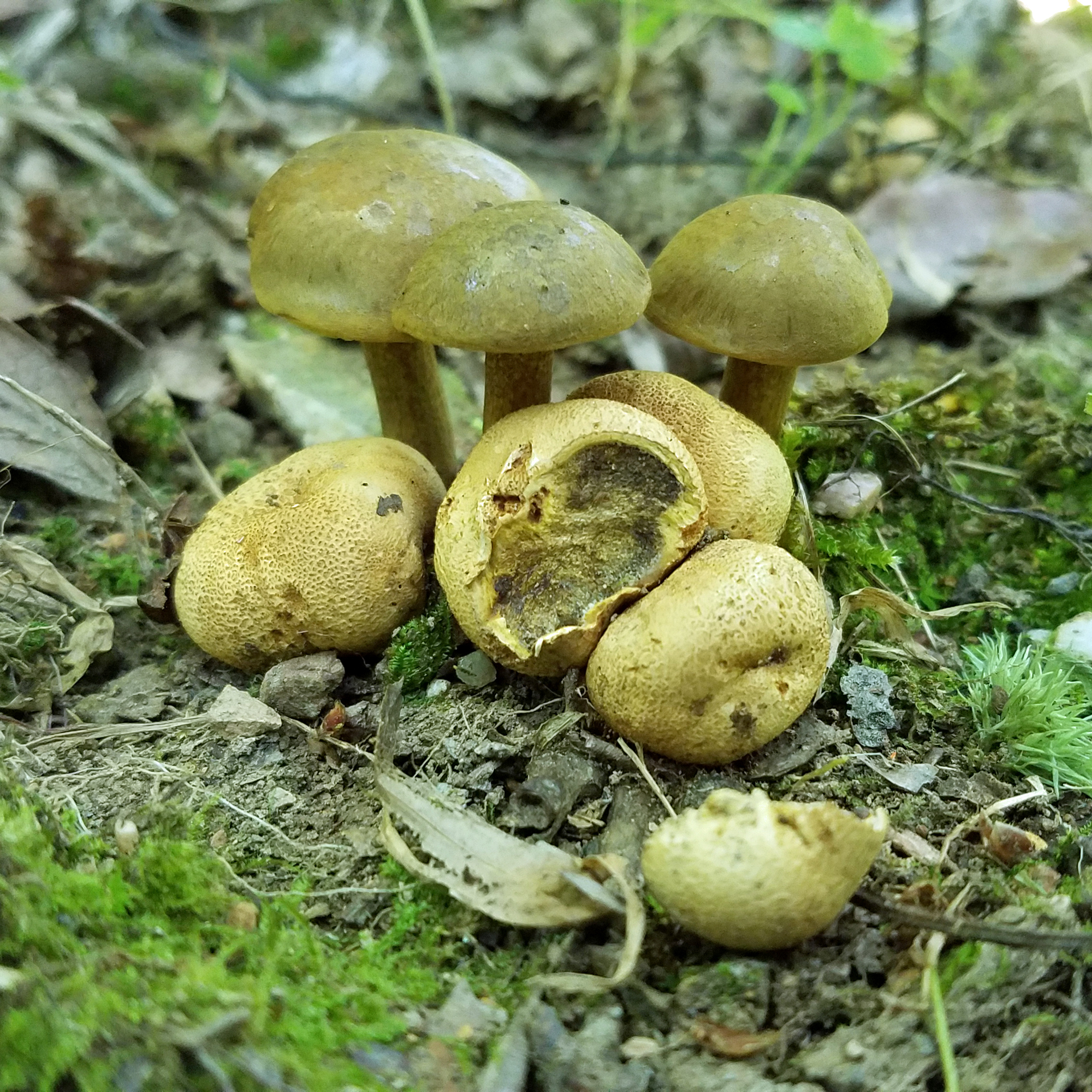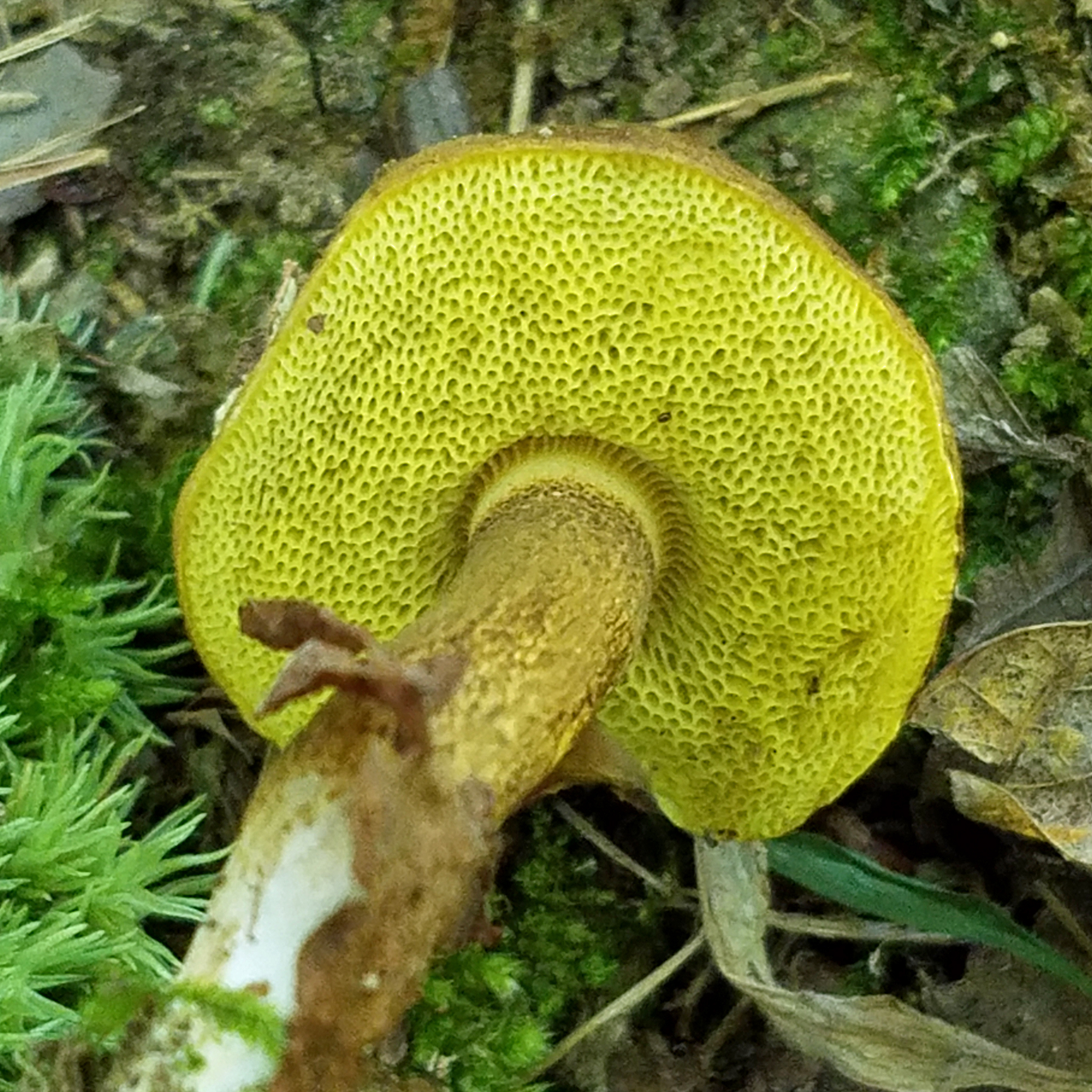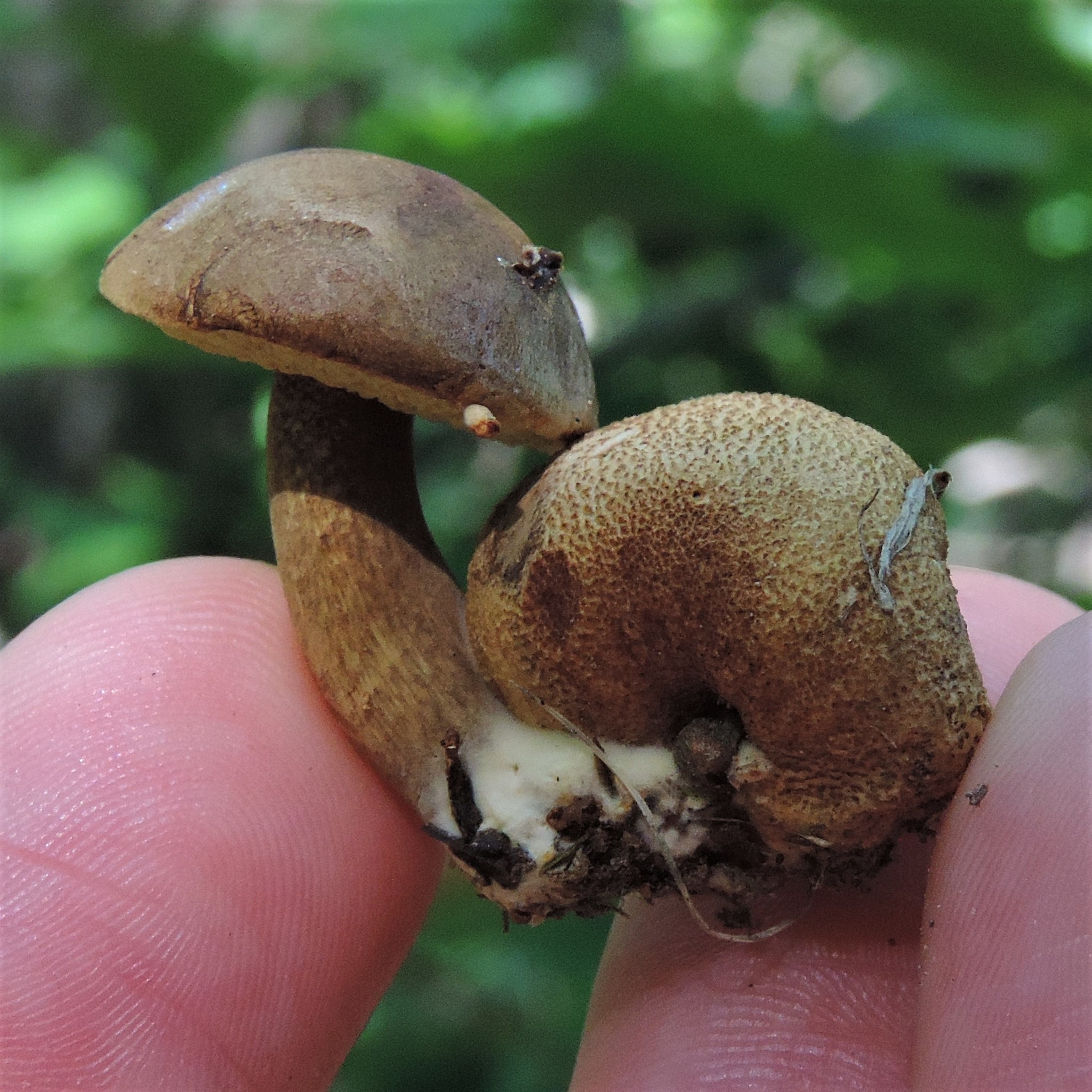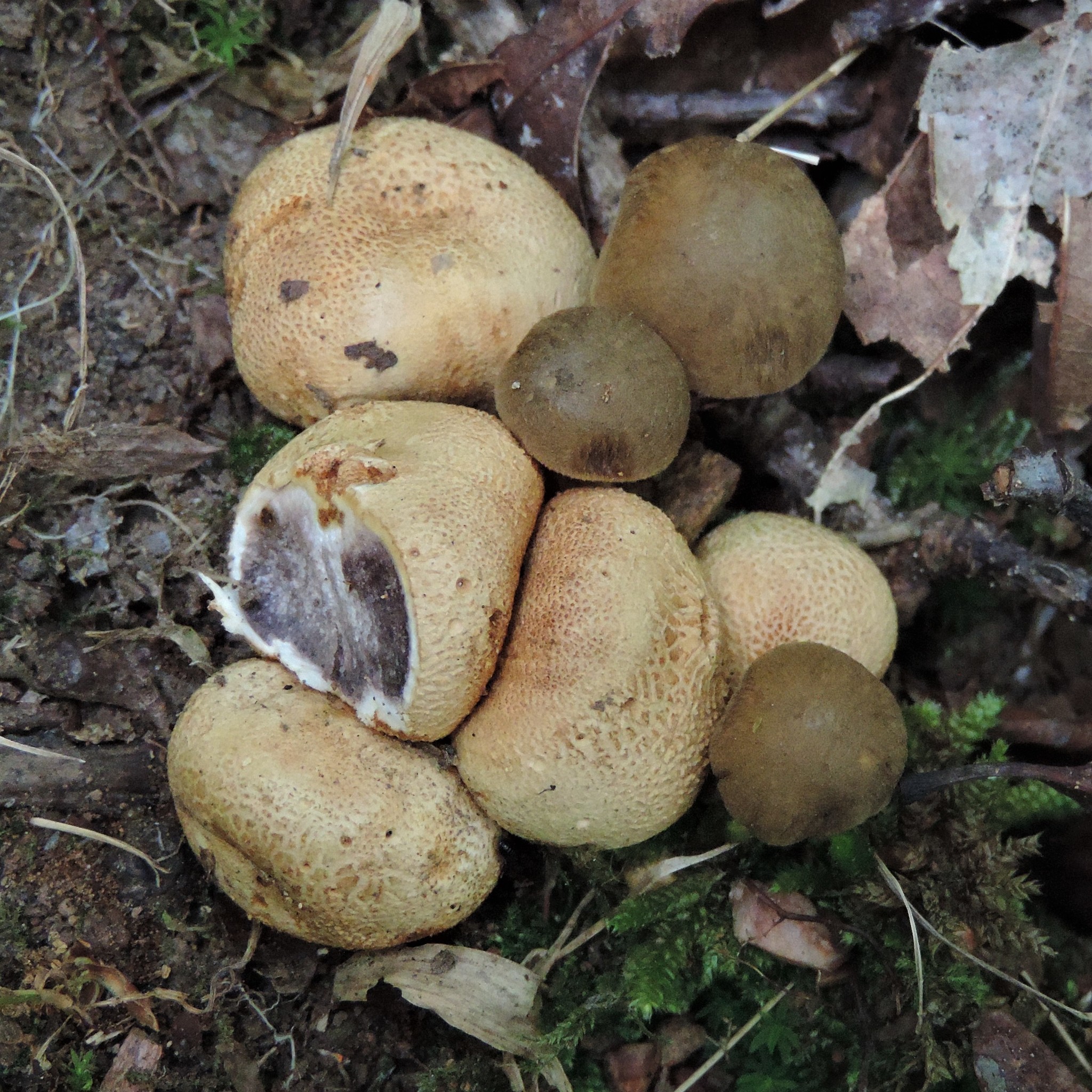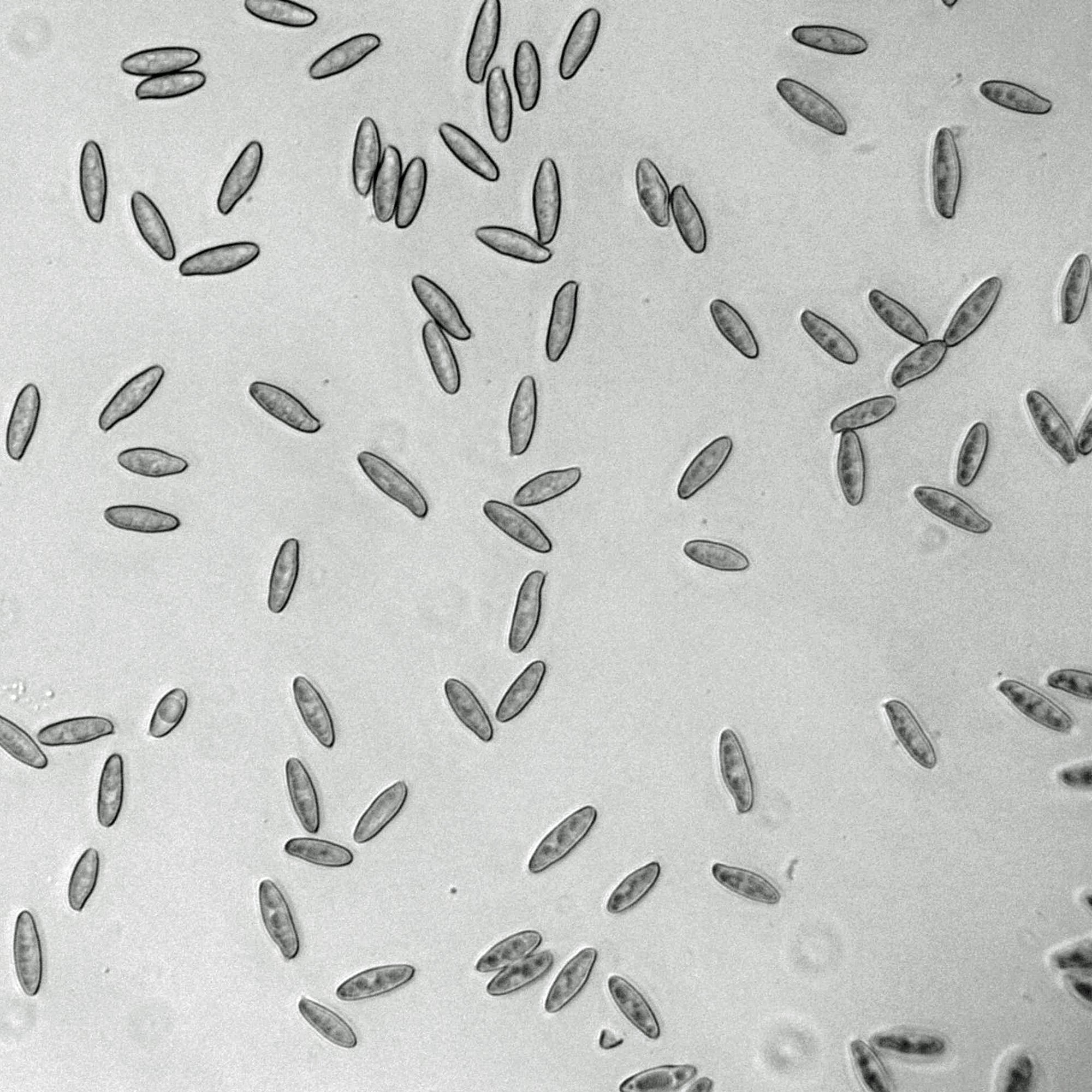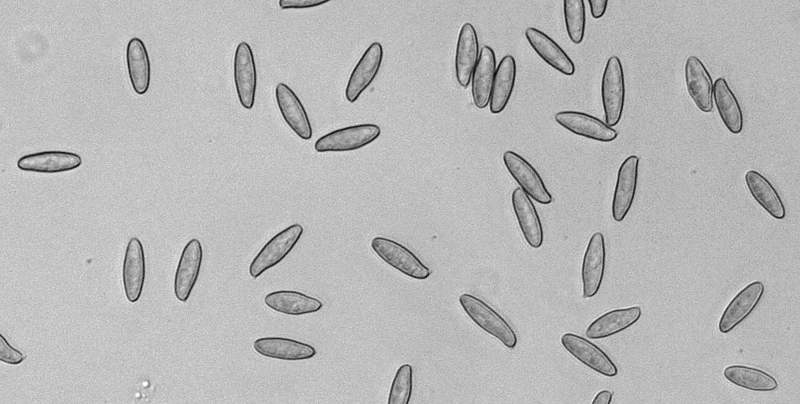


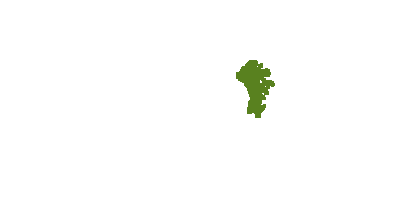

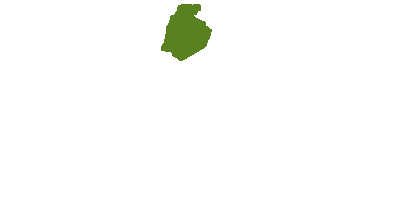
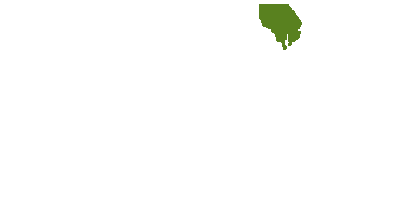
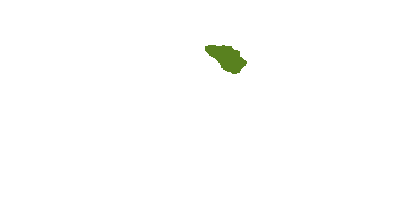

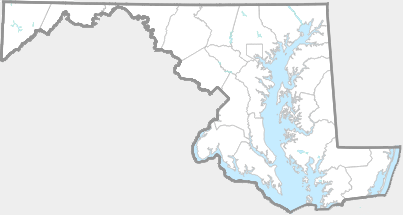
Cap: Hemispheric to convex, shades of brown, velvety to smooth; flesh pale yellow. Pores: Yellow to olivaceous, occasionally with rusty stains. Stalk: Nearly equal, usually curved, yellow densely covered with dark fibrils; white / pale yellow mycelium at base.
Found solitary or in small groups attached at base to fruiting bodies of Common Earthball (Scleroderma citrinum). Although commonly referred to as "parasitic," the relationship may be much more complex. Usually found in hardwood forests (oaks) or mixed forests with hemlocks. (J. Solem, pers. comm.)
There are 21 records in the project database.
| GA | AL | WA | FR | CL | MO | HO | BA | BC | HA | CE | PG | AA | CV | CH | SM | KE | QA | CN | TA | DO | WI | SO | WO |
